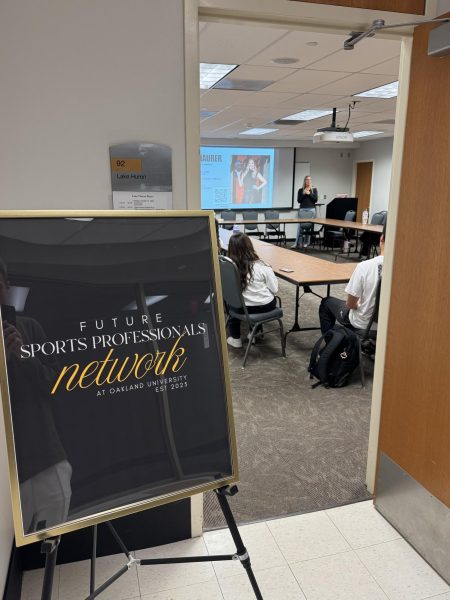A career in Hynd’s sight
Oakland University President Dr. George Hynd spoke to the Psi Chi Honor Society last Thursday about his research, background research and experiences in the psychology field.
Throughout his combined 40 years in academia, Hynd has researched neuropsychology, child development, and education.
“Never in my wildest dreams did I think I’d become a research professor, let alone a university President,” Hynd said
At the beginning of Hynd’s career he was teaching elementary school students from grades fourth through sixth. He noticed, particularly with sixth graders, that some students were struggling to read despite all best efforts from him and others.
“I was absolutely mystified,” Hynd said.
He was then motivated to go back to school and earn a doctorate degree to better understand why some children are unequipped to read.
Being a history minor, Hynd dove into literature, studying historical medical research on what was known about dyslexia, or reading disabilities. Hynd talked about how society became more industrialized.
“I encourage all researchers to read their history,” he said.
“Back in the seventies, eighties and nineties, psychology was resisting to move towards biological explanations,” Hynd said.
Hynd said that brain damage is not to explain. Since it was observed in many studies that there was a correlation between families and reading difficulties, a biological origin seemed logical.
A genetic tree chart pointed out that carriers would have a 50% chance of passing on the reading disabled (RD) gene to their offspring.
With provided illustrations of activity in the brain with a slideshow of various neurological models, the audience could follow along. Brain electrical activity mapping and MRI images represented activity in color.
Different areas were highlighted depending on the reading status of that person. A normal brain would appear less active in certain areas than a RD or a gifted RD person who has very adept skills elsewhere.
The audience was also encouraged to point out certain areas on their skull where a specific part of the brain would function, like the top of your head being where the motor strip is located.
Asymmetry between left and right side usage of the brain was a good predictor of RD in early life. Brain development during prenatal stages was also deemed to be very important in predicting language capabilities.
The research by Dr. Hynd and his team shows new understanding of reading impaired people using new technology. His updated research will assist in adjusting education for those who are not learning conventionally.




